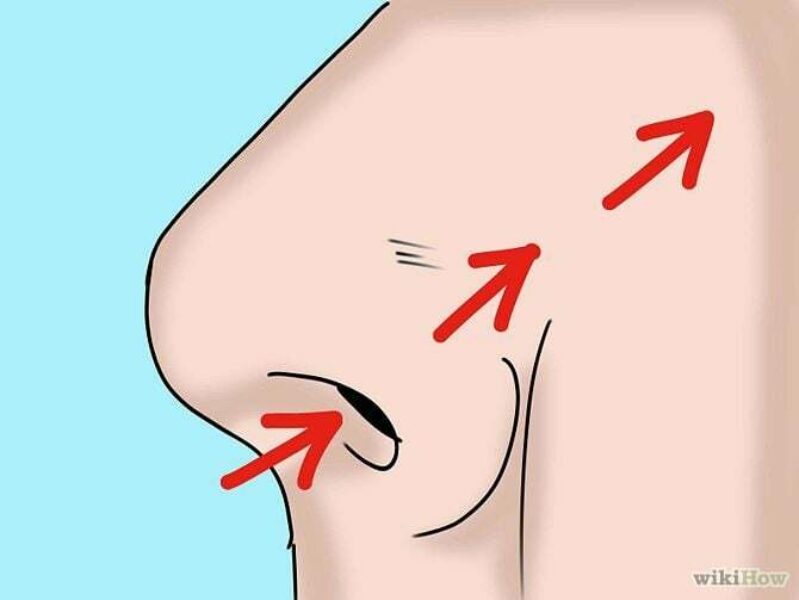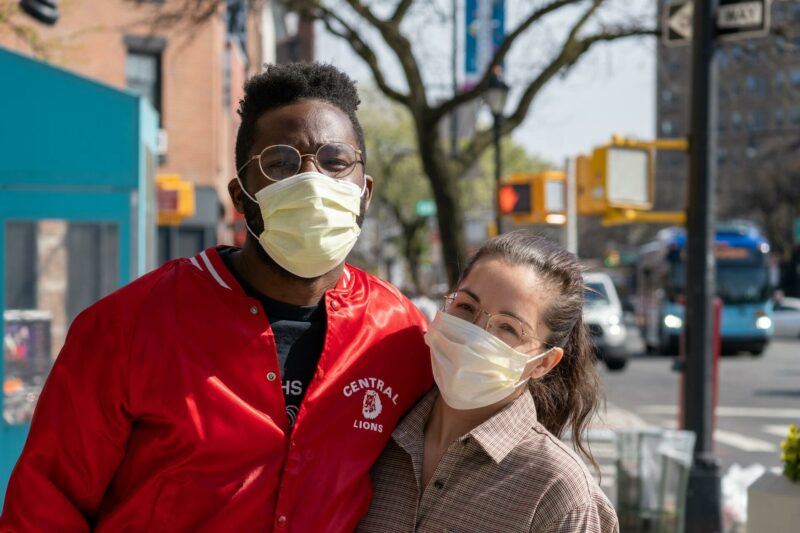
The post that went viral on facebook
By: Linda Thai
I have noticed that individuals with mental health issues/trauma histories struggle with wearing face masks, and here is how I came to this realization:
I saw an OSHA video going around a few weeks ago. A man was holding an oxygen-sensor next to his ***mouth*** and measuring oxygen levels, mask-off and then mask-on, to “prove” that wearing a mask was hazardous for your health.
The yoga teacher in me was like, “Hmmm, who the heck breathes through their mouth? Mouth-breathing jacks up the nervous system."
That was when the somatic trauma therapist in me joined the dots about anti-mask wearing, mouth-breathing, mental health and trauma responses.
When we perceive danger, we mouth-breathe in, in order to rapidly oxygenate the body and to mobilize the active defenses of fight and flight (sympathetic arousal). Putting on a face mask can elicit the beginnings of sympathetic arousal in many individuals. Furthermore, mouth-breathing can be detrimental when wearing a face mask, as the body isn’t able to get enough oxygen, which can cause the body-brain to spin further into panic/rage/terror. Hence the OSHA video.
Mouth-breathing is common amongst individuals who experience anxiety, depression, have trauma histories, experience other forms of mental illness or developmental disabilities.
Nose-breathing restores the body back into the parasympathetic branch of the autonomic nervous system (rest and digest, safety and connection), and keeps the prefrontal cortex online therefore able to discern the difference between uncomfortable and unsafe.
Individuals whose nervous systems are conditioned to correlate mouth-breathing (sympathetic arousal) with danger responses will ab-react to mask-wearing.
And yes, mouth-breathing can be associated with sympathetic arousal in a good way - surprise, excitement, joy, awe and wonder. The ventral vagal branch of the parasympathetic nervous system mitigates this arousal (when developmentally co-regulated) creating a robust nervous system capable of tolerating the full range of positive emotions. However, for now, this is outside of the mask/no-mask conversation.
We get advised to wear masks, but no one has taken the time to explain to us how to breathe when wearing a mask.
I have been using the face mask as an intentional activation cue to breath in-and-out through my nose and my nose only.
I do box breathing exercises when I'm feeling a little anxious. (Inhale for a count of four. Hold the breath for a count of four. Breath out for a count of four. Repeat four times.)
Mostly, I just focus on the long exhale, which also activates the parasympathetic nervous system. And I make sure that I’m breathing into the area below my navel, a result of my diaphragm be relaxed and fluid. (The diaphragm tightens up during sympathetic fight-flight activation.)
If I catch myself sharply mouth-breathing-in, I close my mouth and breath in the rest of the way into my low belly, and then sigh or hum as I focus on a long exhale. Making audible sounds is not what an animal in danger does. It is what an animal in safety does. And so, this restores me back into the ventral vagal branch of the parasympathetic nervous system.
I teach these techniques (and more) to my clients, who are reporting increased capacity to navigate through this brave new world.
Some individuals cannot nose-breath or cannot tolerate wearing a face mask, for various reasons ranging from suffocation trauma to autism spectrum disorder to medical issues that inhibit nose-breathing. Some individuals have very tight diaphragms, which can make deep belly-breathing challenging. Some of these conditions can be treated more quickly than others; some folks have access to treatment, some do not.
Either way, intentional breathing is a gift, for it anchors each of us back into the grace of this moment where kindness is possible.

After hearing of the difficulties people face as a result of wearing a face mask, Linda developed this course. The four-session program is designed to help teachers, health care workers, mental health workers, and anyone who has to wear a mask overcome the challenges they experience.
Throughout each session, Linda teaches us to use a mask as an intentional activation cue to breath in-and-out through the nose, and to breathe into the diaphragm. By focusing on breath awareness, we can all move toward feeling a sense of calm, rather than a feeling of sympathetic arousal that leads to a fear response.
This course would also be beneficial for people who experience structural, neuromuscular challenges with nose-breathing, including individuals who experience developmental disabilities (autism spectrum), or other medical issues.
Learn More →Sign up with your email to receive news and updates.